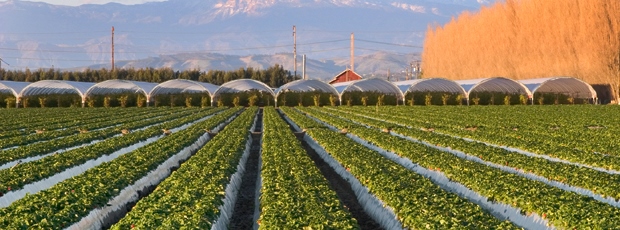Tomato Tweaking: Genetically Engineered Crops May Be Safe for Consumption, Environment
Environmental Litigation
Stephen T. Holzer
Most of us remember the Jack and the Beanstalk story. In this 18th century fairy tale, a young, poor, every-day Jack trades an old cow for magic beans which makes his mother very angry. But in the end, Jack manages to bring home untold riches, ending all of their worries – barring a potential blood feud with a murdered giant’s wife – all because of these special beans. (Never mind that Jack was technically a housebreaker. That’s another area of law entirely.)

Genetically-engineered crops (or GECs) may very well be like Jack’s magic beans, based on the fear and anger they seem to sprout among environmentalists and the health conscious.
But before we get into that, let’s narrow the field of villains by first defining GECs, which should be distinguished from genetically modified organisms, or GMOs.
Some experts contend that GECs are actually a type of GMO. Genetic modification has been going on since the dawn of agriculture – almost all of our food has been modified over the centuries. Such modifications allow for corn digestible by human stomachs, or the thousands of known varieties of tomatoes cropping up globally.
Engineered agriculture on the other hand, was first developed in the 1990s and has a specific goal of adding new traits to an organism. These traits might include making a papaya virus-resistant, or rice harvests more nutrient-rich. If we believed in castles in the sky, scientists might engineer a beanstalk to get there, making it grow taller and sturdier.
So how safe are GECs?
Try the Beans. They’re Not Bad.
Researchers published a report last year that may allay some of the aforementioned fear-based anger.
The study released in May, was conducted by members of the Board of Agriculture and Natural Resources, the Division on Earth and Life Studies, and the National Academies of Sciences, Engineering and Medicine. The authors drew conclusions based on “the National Academies consensus-study-process”: relying on field studies conducted since the 1990s, input from over 700 experts and organizations, and both peer-reviewed and non-peer-reviewed literature.
They contend that scientists have been developing GECs “to express novel traits” since the 1980s, though they weren’t available for commercial use until the 1990s. But at the conclusion of their data gathering in 2015, only two varieties of GECs were in wide-spread use: those that have been engineered for insect resistance, and those engineered for herbicide resistance.
Based on their research, the authors concluded that these engineered plants are safe for both human and livestock use and consumption:
. . . long-term data on livestock health before and after the introduction of GE crops showed no adverse effects associated with GE crops. The committee also examined epidemiological data on incidence of cancers and other human-health problems over time and found no substantiated evidence that foods from GE crops were less safe than foods from non-GE crops.
GEC Agronomy and the Environment
Further, the research committee also indicated there is no conclusive proof that GECs have negative effects on the environment – though the authors do amend that conclusion with a warning that measuring long term environmental effects is a complicated process.
There have been strong claims made about the purported benefits and adverse effects of GE crops. The committee found little evidence to connect GE crops and their associated technologies with adverse agronomic or environmental problems.
The research cites mixed evidence regarding increased or decreased crop yields and biodiversity. For example, “The quantitative contribution of GE crop traits themselves to yield in experimental plots was sometimes difficult to determine because the GE and non-GE varieties could differ in other yield-associated traits.”

Additionally, further studies need to be conducted to account for differences in soil characteristics, irrigation and tilling frequency, and a host of other factors like the use of glyphosates or a farmer’s financial resources. Over a decade of research was available to the authors – but they conclude more targeted testing is needed.
Lettuce Legislate GM Labeling
It seems GECs may not be as bad as some environmentalists believe. So why then, have six counties in California, most recently Sonoma County in the November election, banned genetically engineered agriculture? Our state has the largest GEC-free growing zone in the country.
It seems that despite the National Academies of Science study, the giants of environmental concern are still feeling threatened by GM agronomy.
Last July, President Barack Obama signed a law that modifies the Agricultural Marketing Act of 1946 – it directs the Secretary of Agriculture to devise a system for labeling food that had its DNA modified by scientists (as opposed through conventional breeding or by nature).
The US Department of Agriculture had two years as of the enactment of the law to establish the rules, and the Department recently posted 30 questions for interested parties to answer to facilitate in drafting those GMO labeling rules. The USDA says there will be an additional period for comments once the Department compiles input acquired via the questions and proposes a labeling rule.
Stephen T. Holzer is the </attorney/stephen-t-holzer/”>Chair of our Environmental Practice Group and a business litigation attorney.
